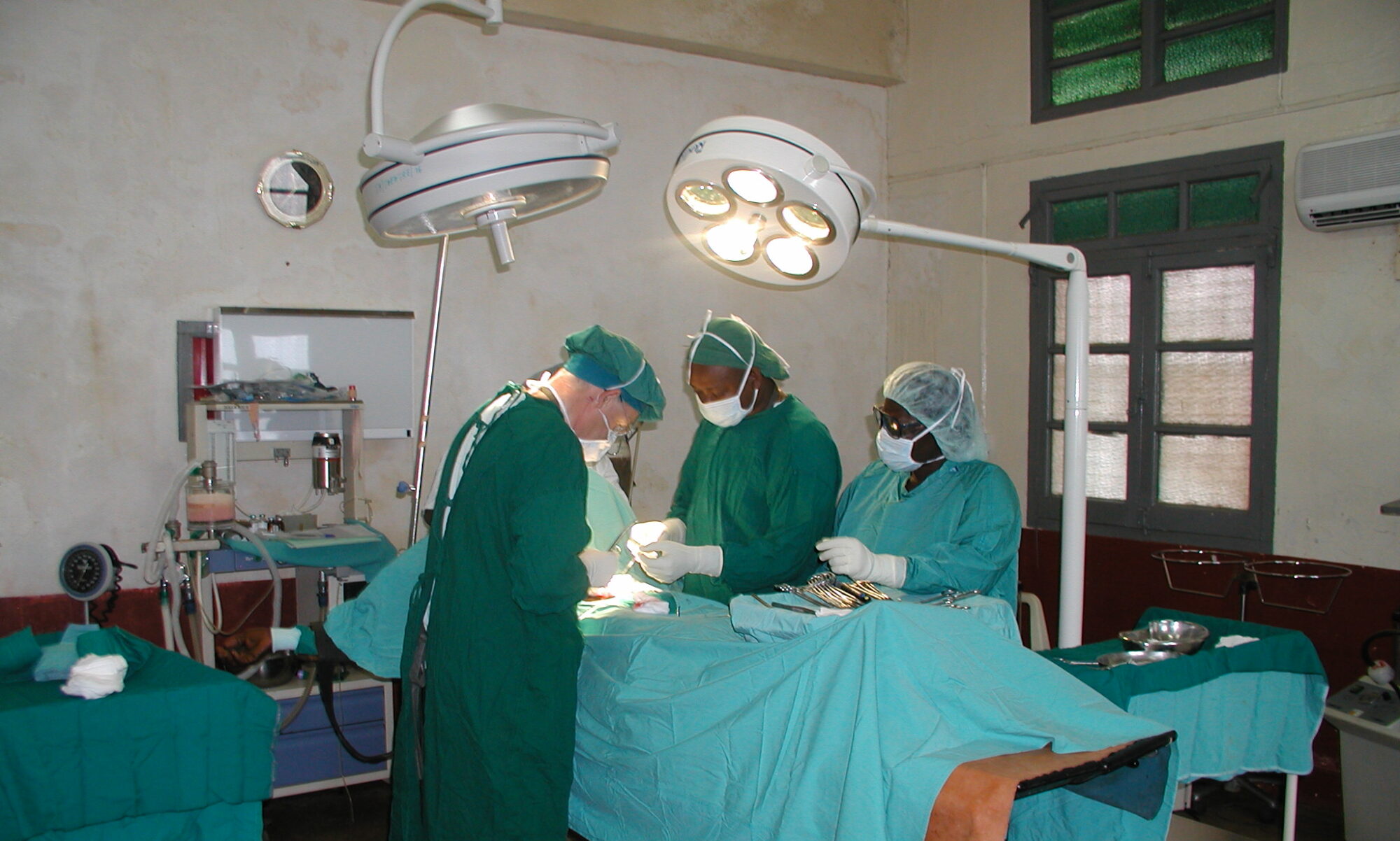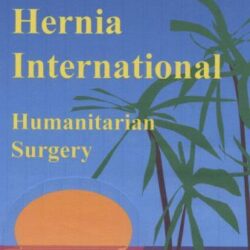REPORT OF THE ULLONGUE- MOZAMBIQUE CAMPAIGN

DATE 19-12-2022
1. TECHNICAL REPORT:
a. DATES AND LOGISTICS DEPLOYED:
ULLONGUE CAMPAIGN 28-10-2022 TO 6-11-2022
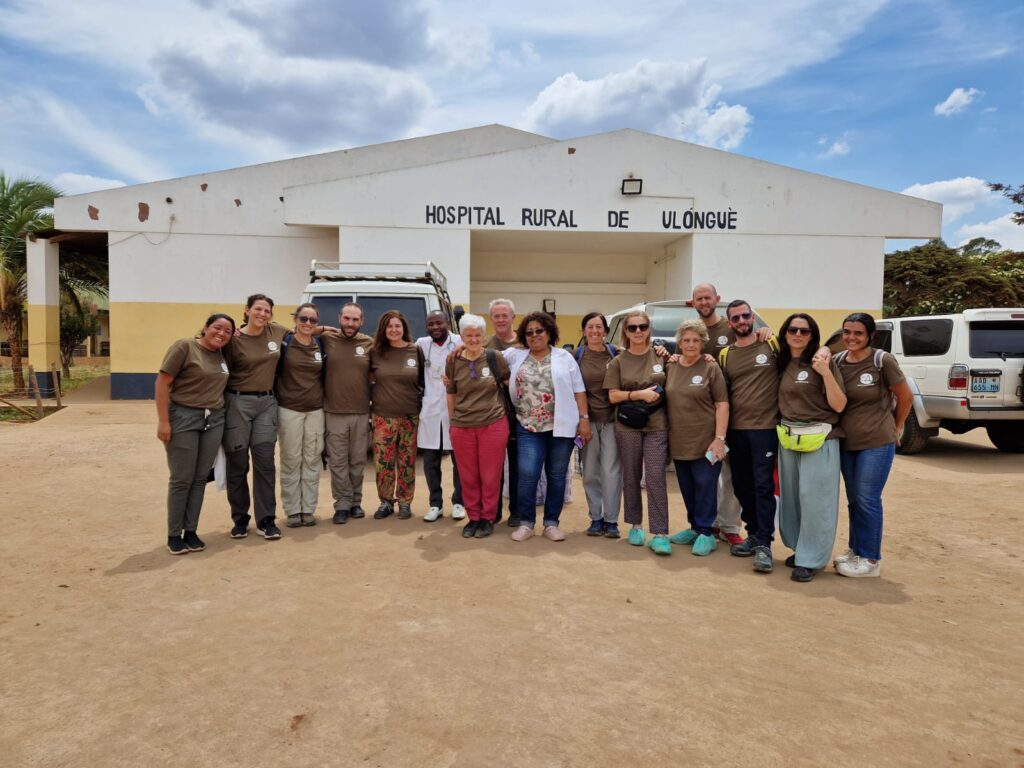
b. ADULT PATIENTS:
NUMBER OF PATIENTS: 96
NUMBER OF PROCEDURES: 105
DIAGNOSES:
INGUINAL HERNIA = 18
UMBILICAL HERNIA = 4
EPIGASTRIC HERNIA = 3
FEMORAL HERNIA = 1
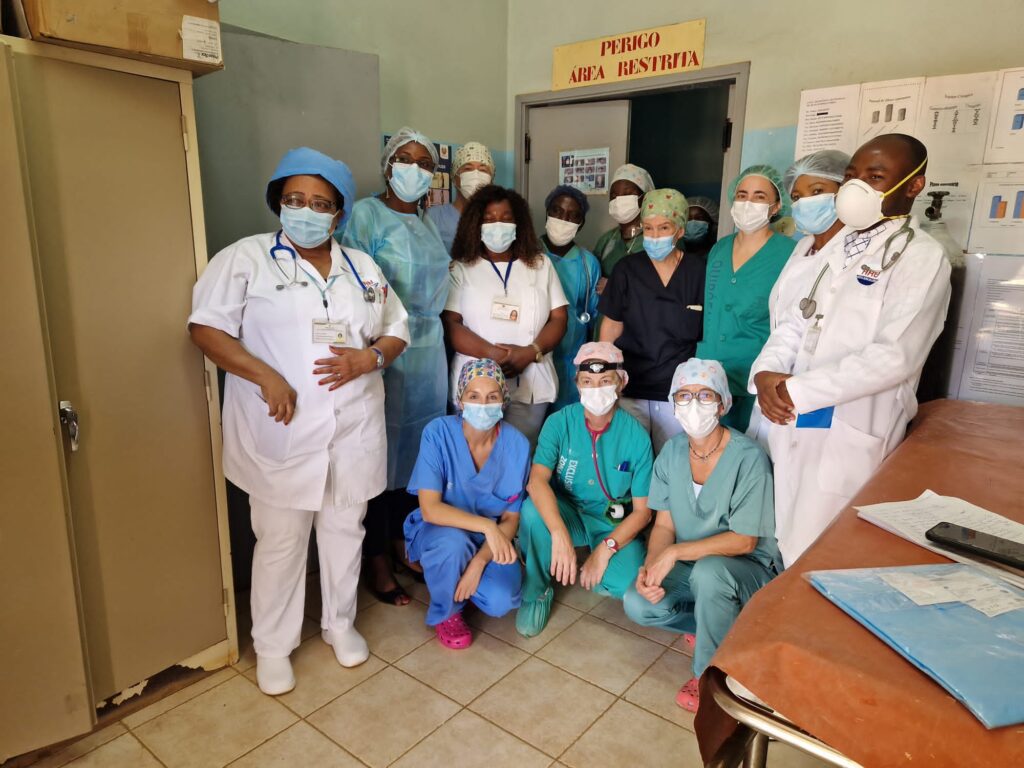
HYDROCELA = 8
TUMOURS OF SOFT PARTS (cysts and lipomas) = 50
GANGLIOMA = 7
CHELOID = 4
ANAL FISTULA = 2
HAEMORRHOIDS = 2
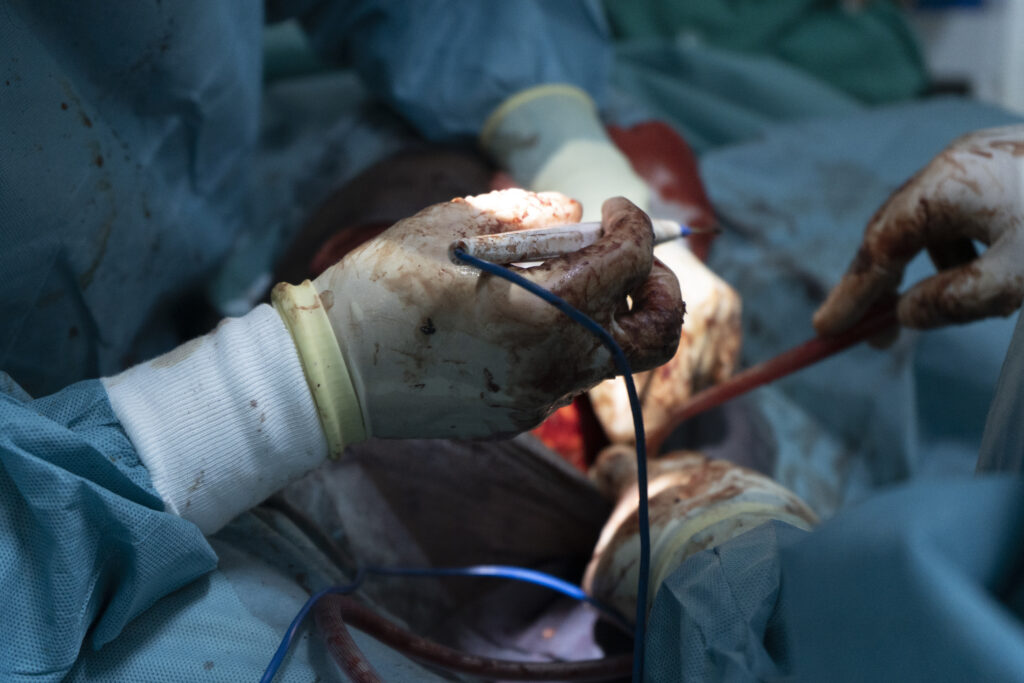
TOE AMPUTATION = 1
BREAST TUMOUR = 1
TESTE TUMOUR = 1
ABDOMINAL MASS = 1
INTESTINAL OCCLUSION DUE TO COLONIC VOLVULUS = 1
uterine rupture (assistantship) = 1
c. PAEDIATRIC PATIENTS:
NUMBER OF PATIENTS: 30
NUMBER OF PROCEDURES: 33
DIAGNOSES
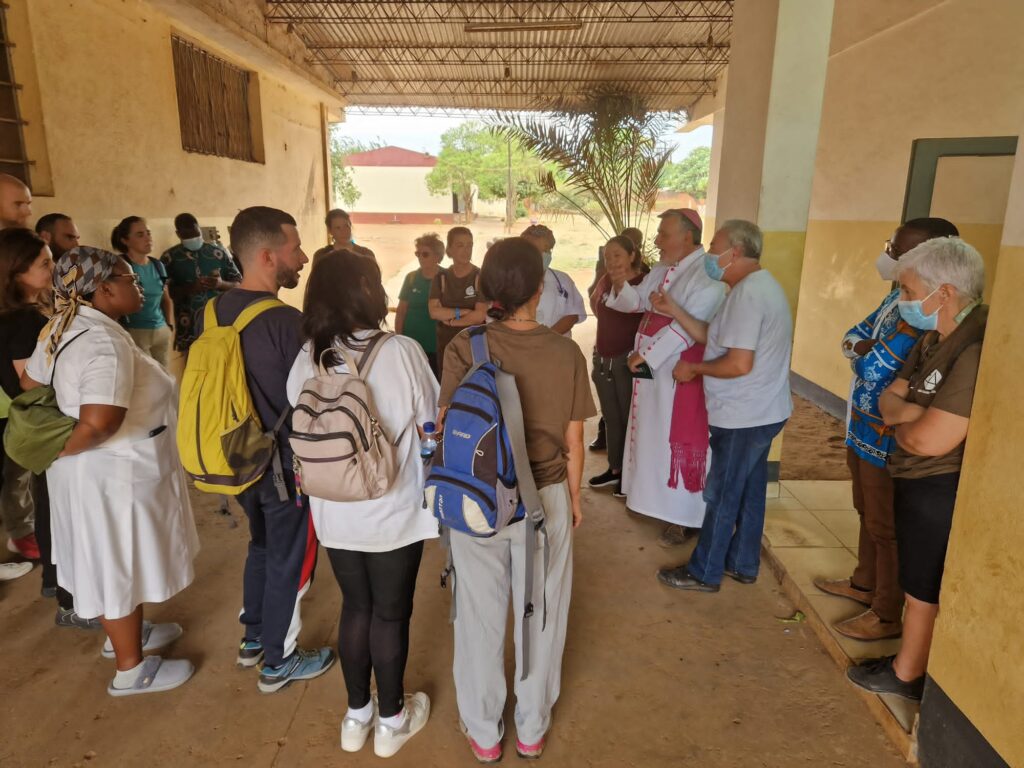
Right costal tumour (Teratoma) = 1
Amputation of right arm + wound dressings face + wound dressings EII = 1
Cervical tumour = 1
Malar tumour = 1
Vulvar synechiae = 1
Frontal exostosis = 1
Fistula due to osteomyelitis EIE = 2
Ganglion = 1
Baker’s cyst IBD = 1
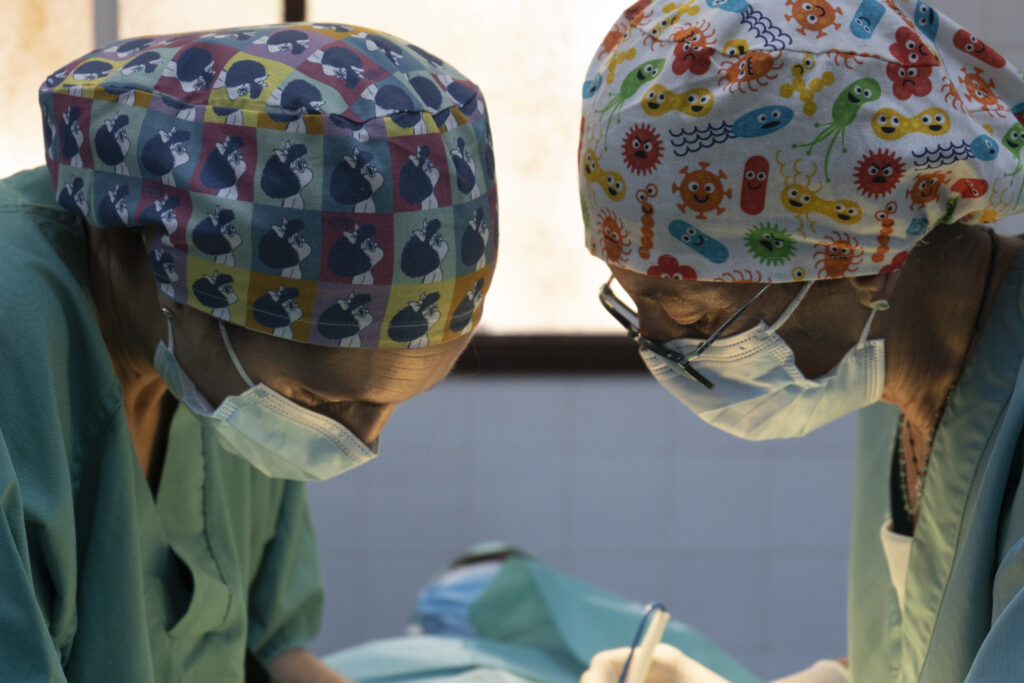
Inguinal hernia = 6
Umbilical hernia = 10
Hydrocele = 1
oft tissue lump = 6
- COMPLICATIONS: WE HAVE NOT HAD ANY COMPLICATIONS, we have been in contact with colleagues in the area and the patients we have left in hospital, no complications.
2. CAMPAIGN REPORT
- THE PLACE
The rural hospital of Ullongue was already known to us, as this is the third campaign we have carried out there (all before Covid). The equipment of the surgical area has only improved in that we had oxygen and that the anaesthesia machine worked but only in one room.
We operated in 2 operating theaters: the paediatric in the operating theatre and in the other ward we placed 2 tables that are stretchers, and separated them with a screen.
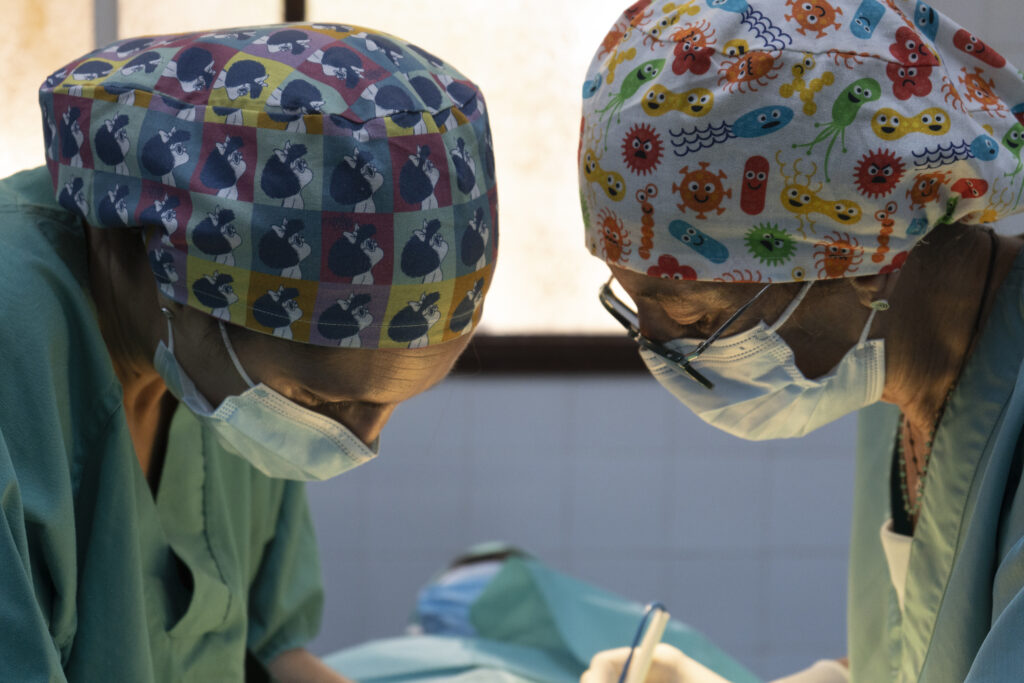
The hospital ward is opposite and unlike other times there is now a hospital doctor who monitors the patients and gives us support.
Recruitment this time was zero, there was no recruitment at all, and we found that we had to do it on arrival, which is why we didn’t operate much. The paediatricians on the first day went to the orphanages to recruit and we visited there in the mission and in the hospital. This was because the contacts we had there, are now gone
- THE TEAM (members of the group)
Dr Lola Delgado paediatric surgeon
Dr Jesús Redondo: paediatric surgeon
Dr Pilar Murga : anaesthetist
Dr Isabel Moreno : anaesthetist
Dr Quique colas : adult surgeon
Dr José Manuel Hernández : adult surgeon
Dr Sandra del Barrio: Adult Surgeon
Dr Lucia Catot : Adult Surgeon (leader team)
Dr Helena Sarmento : Internist
Mª Jesus Nieto : Nurse
Lola Mora : Nurse
Father Vitor Lamosa- interpreter
Irene Manzanares: Photographer
- THE LOCAL STAFF: everything has changed
The medical director Dr Maria
A hospitalist
Dr Olga Sheron who does emergencies
Real Gilberto, who is a surgical technician who does the caesarean sections.
Mr. Julius who does everything, cleans, sterilises, and helps us with everything.
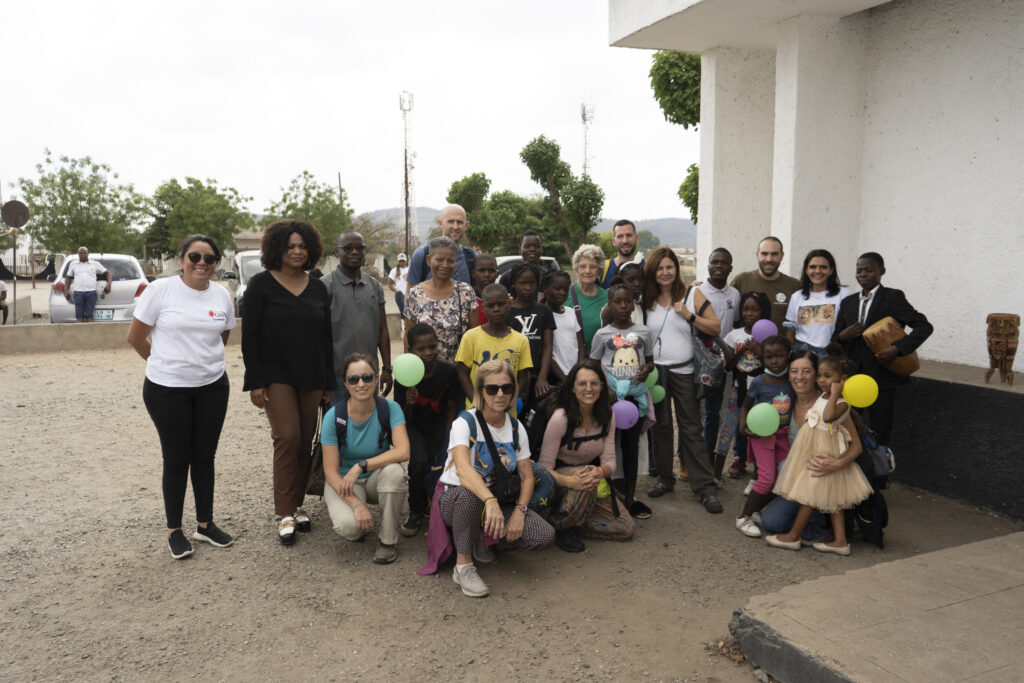
- THE EQUIPMENT :
The paediatricians were well equipped, they brought material and 1 dyathermy generator.
The adults brought 2 dyathermy generators and surgical material. They left us some material but not much.
As for consumables, we brought everything, as there is nothing there.
- ANAESTHESIA
In the case of paediatric surgeries, all of them were performed under general anaesthesia.
In the case of adults, regional anaesthesia, as there is no oxygen or trolley in the room suitable for these surgeries.
f. ASEPSIA AND SURGICAL MATERIALS – They have to sterilise and package.
g. OUR LIFE IN:
We get up around 5.45 am, before breakfast we already have to see people who come from the villages and are waiting for us, the visits always have to be with someone who understands their language (Father Vitor Lamosa).
We have breakfast at the mission and then we go to the rural hospital of Ullongue, about 20 minutes away by car (this year some Portuguese friends of Father Vitor left us a minibus with driver for our day to day). And in this minibus we also take the patients visited in the mission who require surgery.
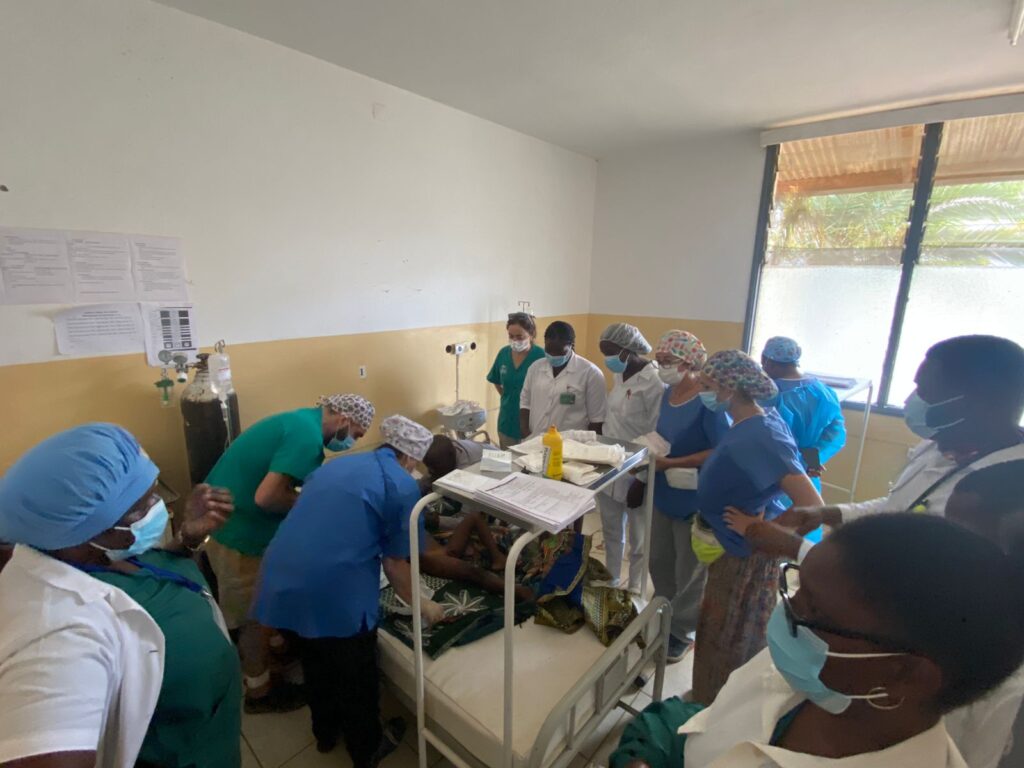
Arrival at the hospital,
– Group 1 visits the patients who had been operated on the previous day.
– Group 2 goes for a consultation
– Group 3 goes to the surgical area with the list of patients scheduled for surgery.
We have lunch around 13.30h which is prepared for us at the mission.
We continue operating until the end of the programme, while we are operating patients are arriving from villages or emergency consultations, and patients are being examined.
Examples:
– A patient we saw occluded and who underwent urgent surgery with a diagnosis of occlusion due to sigmoid volvulus.
– 5-year-old child with traumatic amputation of the right arm with multiple contusions, requiring amputation.
– Patient with multiple injuries from a catana who was transferred to the provincial hospital (we had to pay for the petrol for the ambulance).
– Traumatic uterine ruptures, before going to the centre, from the villages if the patient does not go into labour they use the root of a tree for dilatation.
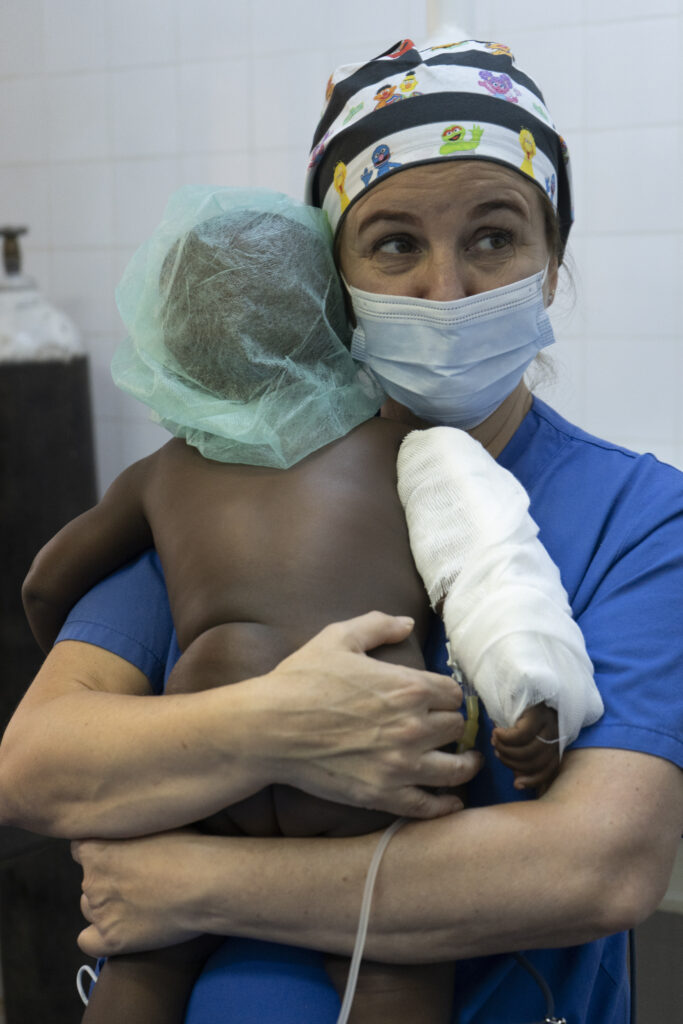
Return to the mission, with the minibus, we and the operated patients that we have brought on the way, who will go home, or stay that night at the mission.
In the campaigns here in Ullongue, every day is a surprise.
And everything flows like that, if there are no inconveniences such as the power going out and the generator not working, the oxygen running out, and thousands of other anecdotes.
Arrival at the mission, shower and dinner prepared for us.
3. CONCLUSION
Strengths of this place: the place itself, the need they have because if we don’t go, nobody goes.
Objectives for improvement:
Recruitment, the difficult thing is that, if there is no one there, it is ifficult to recruit because the villages are far away. Now it seems that the same people will be there next year and they will be able to help us.
4. BUDGET: (small breakdown of costs)
COST PER PARTICIPANT: air ticket 1388.38€ + donation in the mission where we sleep (100 pp).
The air tickets were more expensive than usual as the airlines and flights have changed and now we are going via Luanda.
Signed: Lucia Catot
Team leader
Surgeons in Action
